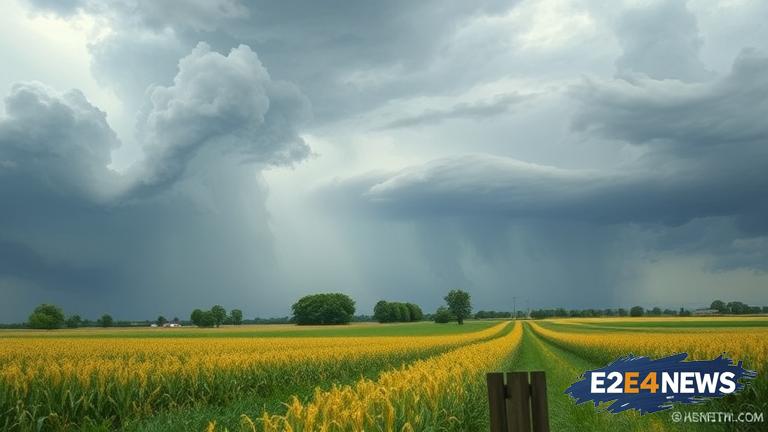The Midwest region of the United States has been experiencing a rare and intriguing weather phenomenon, dubbed ‘corn sweat.’ This unusual event has sparked widespread interest and discussion among locals, with many taking to social media to share their experiences and observations. Corn sweat refers to the process by which corn plants release moisture into the air, creating a humid microclimate that can lead to the formation of fog or dew. This phenomenon is particularly noticeable in areas with dense cornfields, where the collective moisture release from the plants can create a significant impact on the local environment. The corn sweat phenomenon is not only fascinating but also has practical implications for agriculture and weather forecasting. Farmers and researchers are keenly interested in understanding the dynamics of corn sweat, as it can affect crop yields and influence local weather patterns. In recent weeks, the Midwest has experienced a prolonged period of hot and dry weather, which has led to an increase in corn sweat. As the corn plants struggle to cope with the heat, they release more moisture into the air, exacerbating the phenomenon. The resulting fog or dew can be dense enough to reduce visibility, making it hazardous for drivers and outdoor enthusiasts. Despite the challenges posed by corn sweat, many residents are embracing the unusual weather pattern, seeing it as a unique aspect of the region’s character. Social media platforms are filled with images and videos of the foggy landscapes, with many users expressing their wonder and awe at the phenomenon. The corn sweat phenomenon has also sparked interest among scientists, who are eager to study the phenomenon and its implications for the environment. Researchers are using advanced technologies, such as drones and satellite imaging, to monitor and analyze the corn sweat phenomenon. By understanding the dynamics of corn sweat, scientists hope to gain insights into the complex relationships between plants, atmosphere, and climate. The study of corn sweat can also inform strategies for mitigating the effects of climate change, such as developing more resilient crop varieties and improving weather forecasting models. As the corn sweat phenomenon continues to captivate the Midwest, residents and visitors alike are encouraged to appreciate the beauty and complexity of the natural world. Whether seen as a curiosity or a concern, corn sweat is undoubtedly a fascinating aspect of the region’s weather landscape. The phenomenon serves as a reminder of the intricate relationships between living organisms and their environment, and the importance of continued research and exploration. In conclusion, the corn sweat phenomenon is a remarkable and thought-provoking event that has captured the imagination of the Midwest. As scientists and residents continue to study and experience this unusual weather pattern, we may uncover new insights into the natural world and our place within it. The corn sweat phenomenon is a testament to the awe-inspiring complexity and beauty of the environment, and a reminder of the importance of preserving and protecting our planet for future generations. Furthermore, the study of corn sweat can have significant implications for agriculture, as it can inform strategies for optimizing crop yields and reducing the environmental impact of farming practices. Additionally, the phenomenon can also provide valuable insights into the dynamics of local weather patterns, allowing for more accurate forecasting and warning systems. Overall, the corn sweat phenomenon is a fascinating and multifaceted event that warrants continued study and exploration.
